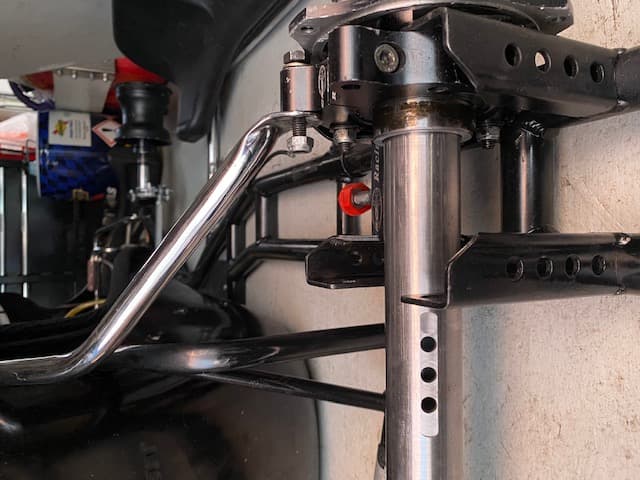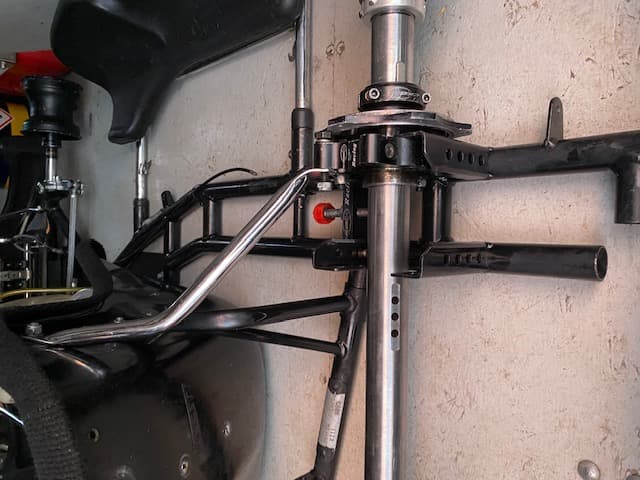Briggs kinda had a triple hit.
Bankruptcy/restructuring
COVID
PVL Bankruptcy
PVL going belly up impacted karting a fair bit as many engine manufacturers rely on their ignition systems including Briggs.
Ironically, Tillotson have bought out PVL.
Briggs kinda had a triple hit.
Bankruptcy/restructuring
COVID
PVL Bankruptcy
PVL going belly up impacted karting a fair bit as many engine manufacturers rely on their ignition systems including Briggs.
Ironically, Tillotson have bought out PVL.
I have been reading the suggested rules published by B&S and noted that EGT’s are not allowed. Do racers run a head temp probe? If so what is the temps normally seen?
What would a decent used motor with a clutch be worth?
Thank you for the LO206 info. My 13 year old son has expressed an interest in karting (previously he had no interest so it was just my older son and me). So the 206 option is more of a lower speed introduction that he may not even race. I have an older CRG that I was thinking would be a kart for this motor however I’m not sure the seat strut will allow this. I have 2 pictures and would like input on what the chances are of setting this up for a 4stroke. I would prefer to not cut the strut.


Head temps were jsut hashed out on here somewhere. I’ll have to dig up the thread. Short answer is “dont run it”.
A decent motor value is really up to the purchaser. Here in the midwest, used motors are going for $1k+ due to the high demand and no engines available to speak of. If you can wait until winter to let supply catch back up, you can get brand new packages for less than that. I, personally, woudlnt pay more than $600ish for a good used engine (again, just my opinion. People can and do pay more).
Looks like plenty of room to get a chain in there. You will be limited in your rear gear size choices, but shouldnt have much trouble.
Get a good, solid adjustable mount. If necessary, look up the PMI mini sprocket series. Good with gears down to 43 or 44 and perfect for this application.
I think you’ll be OK most likely… and really if it came down to it you could remove the strut. Worth noting that you’ll have the same mounting challenge with any of the OHV engines Clone, Briggs, Tillotson.
I kind of figured that any let side drive would be a challenge. This CRG is an early to mid 2000, it seems that most of the newer chassis have a more favorable bend in the right side strut to allow for clearance of left hand drives.
Our track is 4/10 of a mile where the TAG class is 29-30 second laps, mostly flowing except for 1 tight hairpin. Any idea where I would start with gearing.
Why do I see most 4cycles run a chain guide on the sprocket? Will the CRG sprocket work or is that different for board applications?
I would start at 4.0:1 just based solely on what you gave me and nothing else.
Gear guards help with inboard stuff cause the gear is further away from the protection of the tire. It is more likely to get hit on things or sometimes with the super soft axles/chasses, you get enough flex to move things around. I have seen people have success without them and i have seen people improve chain life/robustness with them.
Any sprocket hub will work. Slide it inboard and bolt up whatever gear you want.
As a 2 cycle guy, you could even stick with your 219 chains and your 1 piece gears. Just cut 1 slit in them and slide them over the axle.
I would probably stick with the 35 chain, but you suggested cutting a slit? Whys that?
How similar or not is a B&S LO206 and the “clone” motor. Visually they look fairly similar. It is also curious to me why typically you see strictly B&S classes on sprint tracks and the clones typically used on oval.
So that you can slide the sprocket onto the carrier without having to remove axle.
Clone and 206 are both derived from OHV generator type designs but they are very different in terms of design goals, materials and QC.
When it comes to adoption between sprint and dirt, It’s a bit of a rabbit hole that might be best avoided for now ![]() .
.
I will say this though… maybe we should clarify your goals with the kart?
If you are building a kart for your kid to turn laps and get seat time, a clone or predator is going to probably be the most economical option.
For racing, the clone is not of any benefit to you on sprint/pavement.
I can respect the not getting into the sprint/dirt oval discussion as that could be a separate thread. I am interested in the reason though.
You have surmised my situation correctly. If used LO206 motors are in short supply and overpriced the clone option starts to make sense. Currently, we have no 4 strokes at our track so this is just a practice-only endeavor. I will mention there are several kart dirt ovals in our area too.
I wonder if you start a trend here. Due to ongoing shortages, desperate racers turn to clone engines from Harbor Freight. Sales go through the roof. One year later they team up with SKUSA and we have Supernats 2023: The Clone Wars.
LO206 was designed to be a sealed stock engine where as the Clones are usually heavily modified and can vary in performance and power depending on what was done to them. In terms of Dirt versus Sprint, the rules that dictate what you can and cannot do to improve the performance of the engine are near polar opposites. In sprint racing, the rules tend to be very strict so that there is parody between engines, where as in Dirt they tend to very loose and folks will spend big money to make more power depending on the class structures. Dirt also tends to have Prize Purses at the local levels compared to Sprint that has very few. Money always changes the game.
A harbor freight predator (One form of clone) might be the best way to go then. I throw a clone on for my daughter at first as well.
James, just curious when you did this did you basically keep the motor in its basic form with the stock gas tank and air cleaner, etc? I assume any 4stroke motor mount and clutch would work as well?
I remember when you used to be able to get these for $99, the price has gone up a bit.
What I bought at the time was a “Box Stock Project” engine, looks like supply of those is lagging however. I’m not even sure if the 196 is being made. I used the same mount from my clone for the 206.
Modern replacement is here. You’ll still need to select a flywheel, fuel pump, exhaust, clutch, top plate and probably other stuff I’m missing.
You guys mentioned the Harbor Freight motor. The guy who runs my local track told me he wouldn’t allow one on his track. Primarily because of the sketchy quality of their stuff. He told me they are not designed for the high revs and heavy duty of karting and would likely blow a piston out the case and oil all over his track. Jus’ sayin’…
And I was the guy who started the temp sensor thread for the 206. I was told rule book doesn’t allow for EGT, and the spark plug temp sensor for head temp will minutely lower your head compression, thereby your power, so leave it off.
For racing competition, yes a completely stock (Ungoverned) clone\predator should be approached with caution. The biggest issue is stock flywheels coming apart and/or magnets going into orbit, which is why the box stock engines do not come with a flywheel.
Throwing pistons is a new one to me… But if people spin them hard enough, anything is possible.
That said, the OP is looking for and engine to push the kart around the track and a clone\predator is certainly capable of that once RPMs are sensible.
Worth noting that Briggs engines (Flatheads at the time) had a similar issue with flywheels being spun faster than they were ever designed to be and coming apart. By coming apart I mean exploding. One of the reasons for brining in a rev limiter with the 206.
Rob thats an interesting concern. I would be leaving it box stock as James said just give a new driver seat time. There are videos where the throttle stop is changed and or the governor is bypassed. I would suspect those are the ones your track owner is concerned with, yeah they go faster but there aren’t intended or designed for that. It looks like 3600 is about it for box stock predator rpms.
All the industrial engines are designed to run at 3600 rpm max and are usually supplied governed to that speed.
In UK probably our biggest class is Honda cadet.
They run a Honda GX 160 engine.
The only non standard Honda parts are the exhaust (not a ‘pipe’ but a very expensive tamper proof replica of the standard box) and the valve springs. No special crank,rod,piston carb or …flywheel.
The governor is removed and the ‘go to’ max revs are 6000.
The thought of 'exploding ’ flywheels is indeed frightening but these engines are run in a national class under the auspices of MSUK our FIA/ CIK affiliated governing body and organising clubs are insured through the same body. Nobody seems to consider them dangerous, and to my knowledge there are no instances of flywheel or any other injury threatening failure over a thirty year period.This despite the fact that imo the design of the gx 120/160/200 flywheel is poor ( lots of unsupported rim weight, the bigger engines 240/390 are better in this respect)